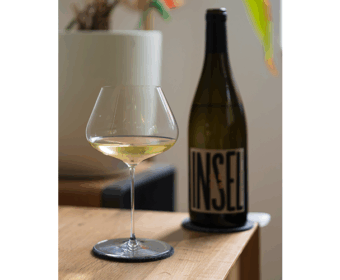Unbottled – Pinot Noir Tasting

I struggled to find a catchy way of describing Pinot Noir. Maybe, the phrase “red wine for Riesling drinkers” might be the best possibility. It has the reputation of being more cultured than other reds, at the same time it also comes off as overly-intellectual. All of this is open to debate, but one thing we do know for sure is that Pinot Noir can produce a wide range of wines. This is what I tried to show in this tasting, but also with a focus on German Pinot Noirs.
Rings Calcaire Blanc de Noirs
As tradition dictates, we started with a sparkling wine. In this case, I chose the Rings Calclaire Blanc de Noir 2019. The grapes grow on chalky soils around Kallstadt in the Palatinate, hence the name. After a spontaneous fermentation in stainless steel as well in Tonneauxs the wine is bottled an the second fermentation takes place in the bottle. The sparkling wine then rests for 36 months on the yeast. During the whole production no sulphur is added.
Straightforward and chalky

The Rings Calclaire starts with clear cut green apple and citrus notes. The wine has a pronounced acidity with clear mineral notes staying true to the name. It did exactly what I hoped it would, make for an excellent aperitif with its bone dry structure. Yet, the wine also was a bit austere for some tasters, which I can also relate to. You really have to be into bone-dry sparkling wines, which I am, to fully appreciate this sparkler.
Ehrlenbach Pinot Meunier
Next, I added the Pirate in the tasting. I tried the Ehrlenbach Pinot Meunier in the summer 2025 and was immediately won over. Florian and Philipp grow their grapes in the Taubertal area, which is part of the Baden wine region. After a selective manual harvest in 13 kg boxes the grapes undergo a cold maceration and ageing is done in small oak barrels for 18 months. The wine is unfiltered with a minimal amount of sulphur.
Fruity and a hint of pepper
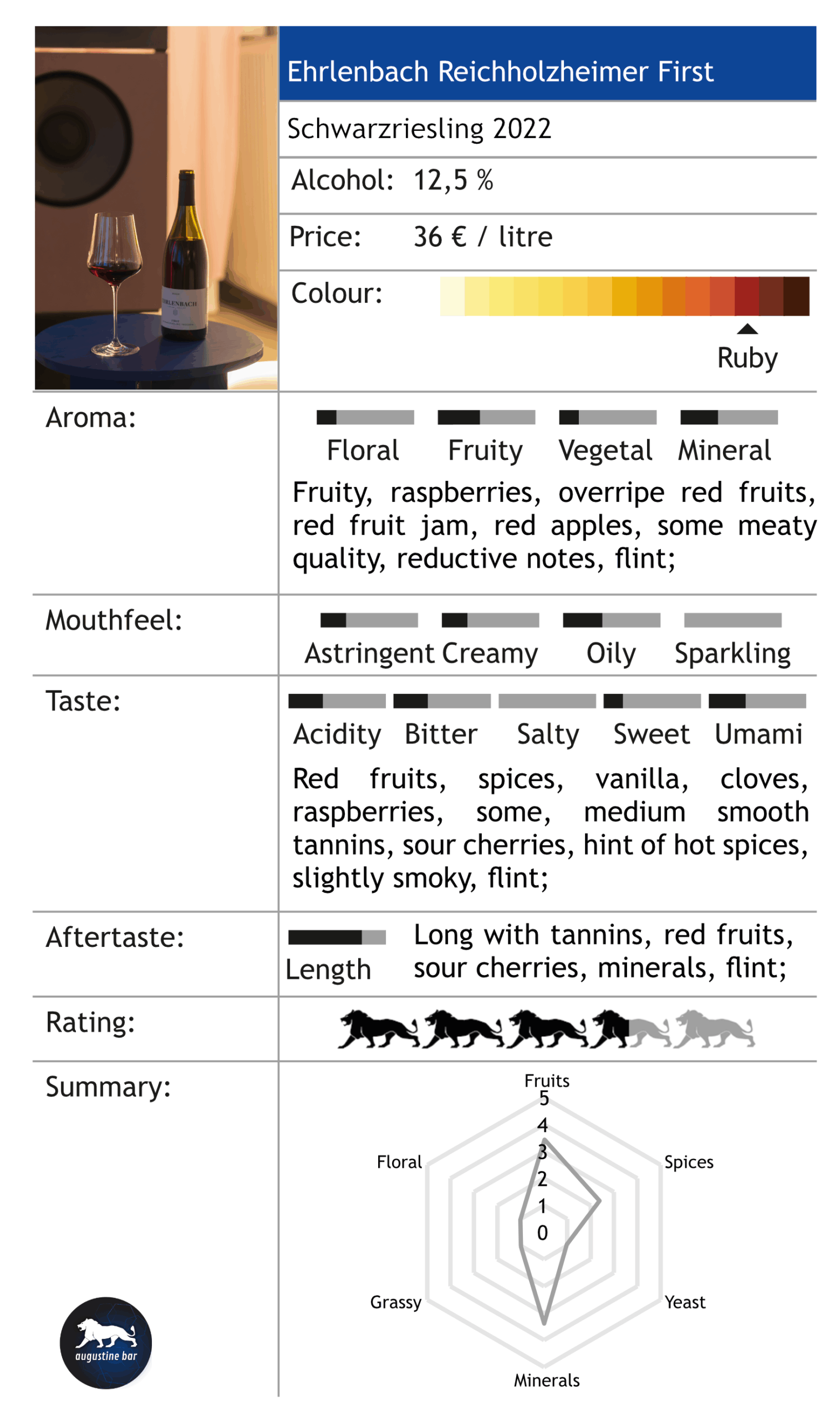
We had the change of receiving two bottles of the sold out 2022 vintage from Florian. When freshly opened, the First Pinot Meunier showed a lot of red fruit flavours with a touch of white pepper. After being open for a few hours, pronounced reductive notes developed which split the opinions of tasters a bit. Yet, you could already see that with more air or when being decanted, this note would disappear again. It was clear that the wine from Florian and Philipp can definitely compete with high-quality Pinot Noirs.
Markus Ruch Klettgau
Furthermore, I included the Markus Ruch Klettgau 2022 in the tasting. The grapes come from different vineyards around Klettgau with limestone gravel, shell limestone, and fine clay in the soil. After a selective manual harvest the grapes ferment with natural yeasts and are aged in used barriques from Burgundy for 12 months. In the end, the wine is bottled without filtration and fining as well as minimal sulphur.
Stringent and funky
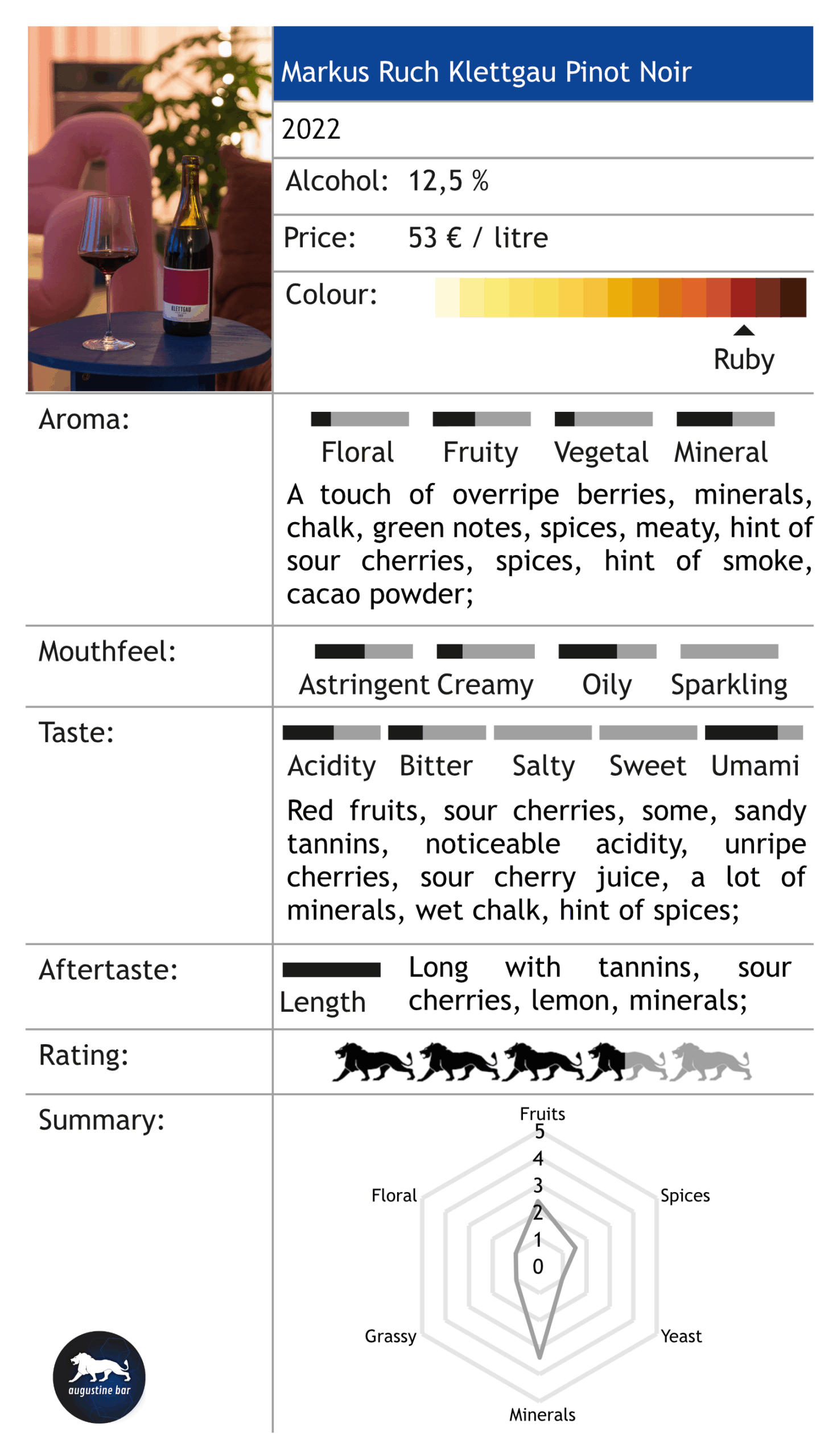
I guess there was a bit of a hype around this bottling in the wine bubble. Now I can see why, the wine is rather special with its stringent, mineral as well as meaty character. Furthermore, the Klettgau Pinot Noir showed almost no red fruits, a noticeable acidity, as well as some smoke. The wine definitely is no crowd pleaser which also showed in the diverging opinions.
Zang Alte Welt Spaetburgunder
The Oekoweingut Zang in Nordheim, Franconia has a rather special Pinot Noir in their portfolio from the 2012 vintage. Since Rainer Zang did not see a market for his Pinot Noir back in the days he aged the wine for five years in stainless steel on the lees. Next, the Zangs put the wine in used barrique barrels and bottled it in 2023. Similar to the other wines in the tasting, the wine is not filtered, not fined as well as only a bit of sulphur is added.
As good as new
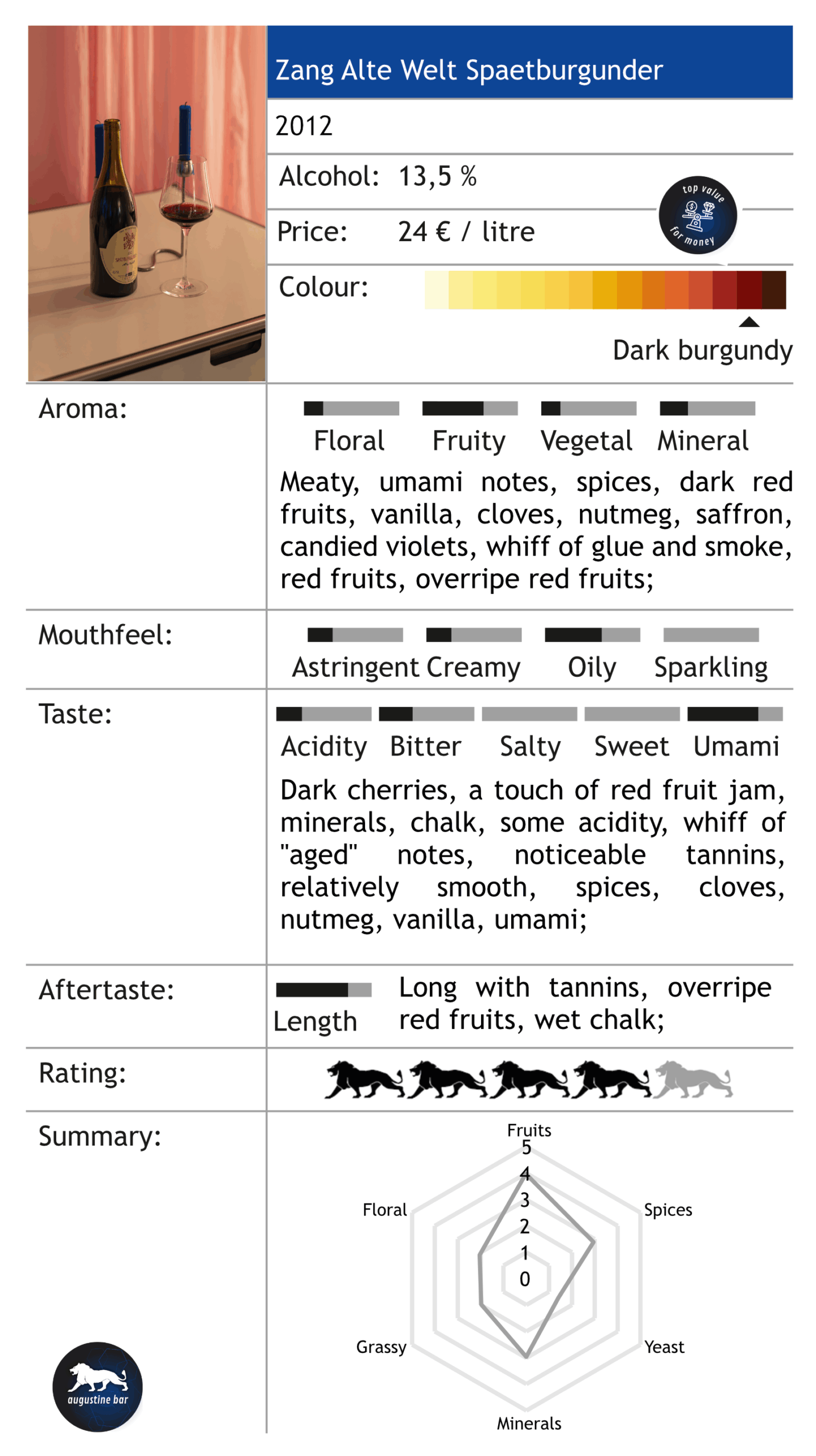
The Alte Welt Spaetburgunder 2012 does not taste like an aged wine. Yes, it was not as fresh as the newer vintages in the tasting, but you still get some red fruits together with a balanced acidity. At the same time, you can taste that the wine is at peace with itself when you give it time and a lot of air. When you include the price, this is definitely an excellent value-for-money pinot.
Solveigs Steil
For the next wine, we increased the volume and ripeness of the Pinot Noir grapes. The Solveigs Steil 2019 comes from the steep vineyards around Assmannhausen. The wine spends over two years in large oak barrels with malolactic fermentation. The wine is unfiltered and leaves the vaulted cellar after further bottle ageing.
Ripe and tasty

One in our tasting-group described this wine as being a “typical German red” and it is. The fruit notes definitely tend towards darker ones like full-ripe cherries instead of sour cherries. Furthermore, the wine comes off having a certain sweetness to it which on paper it does not. The tannins are clearly present on your palate. This way the wine managed to be one of the crowd pleasers in the tasting.
Claude Riffault La Noue Rosé
For a change I also included a Pinot Noir Rosé. In this case, I went for the Claude Riffault Sancerre Rosé La Noue 2022. The wine comes from a single vineyard with 10 to 60-year-old vines. A part of the grapes is directly pressed and another part uses the Saignée technique after six to twelve hours of maceration. Spontaneous fermentation is done in conical concrete tanks and ageing takes place in large, used oak barrels.
A great, but complex refresher
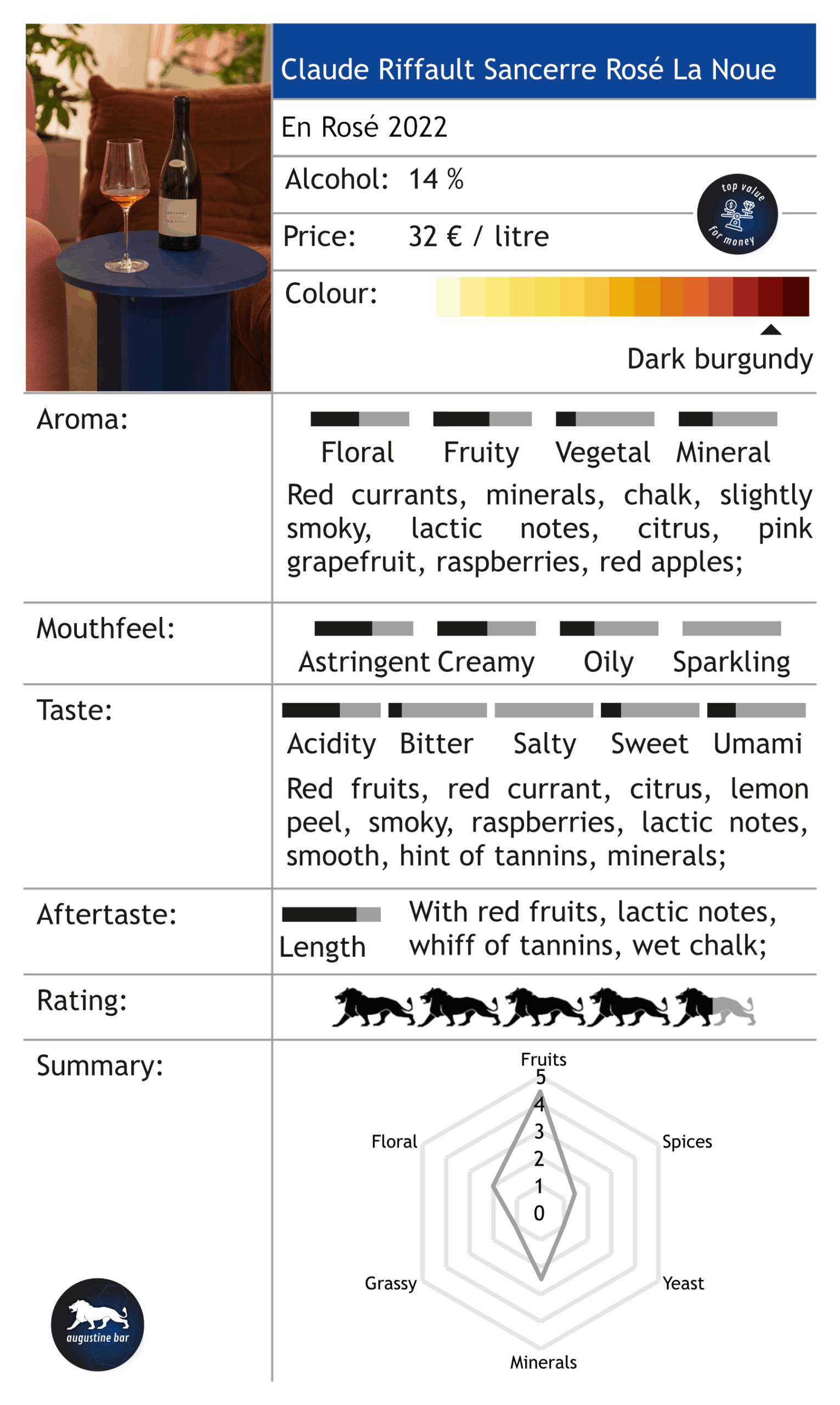
Luckily, my plan worked and the Sancerre Rosé was a welcome refreshing between all the red wine. Apart from that, the La Noue is more than your average rosé. It is dominated by fresh red fruits, red currants and raspberries with a touch of lactic notes. You will find some minerality in combination with a certain acidity which is well balanced, too. I know it is a cliché, but especially the women in our group enjoyed this bottle. However, I also rated this one very high and the wine landed the second highest rating.
Charlotte and David Beck Eichert
Back with some regular Pinot Noirs, Philipp from the Westbar suggested including the Eichert 2019 vintage from Charlotte und David Beck. The grapes grow on old vines from German clones with naturally reduced yields. During the open-vat fermentation the Becks only use manual Remontage. The must is pressed on an old basket press. The wine then spends some months in used French oak barrels. In the end, the wine is bottled without filtration and without fining with minimal sulphur.
Some smoke and some funk
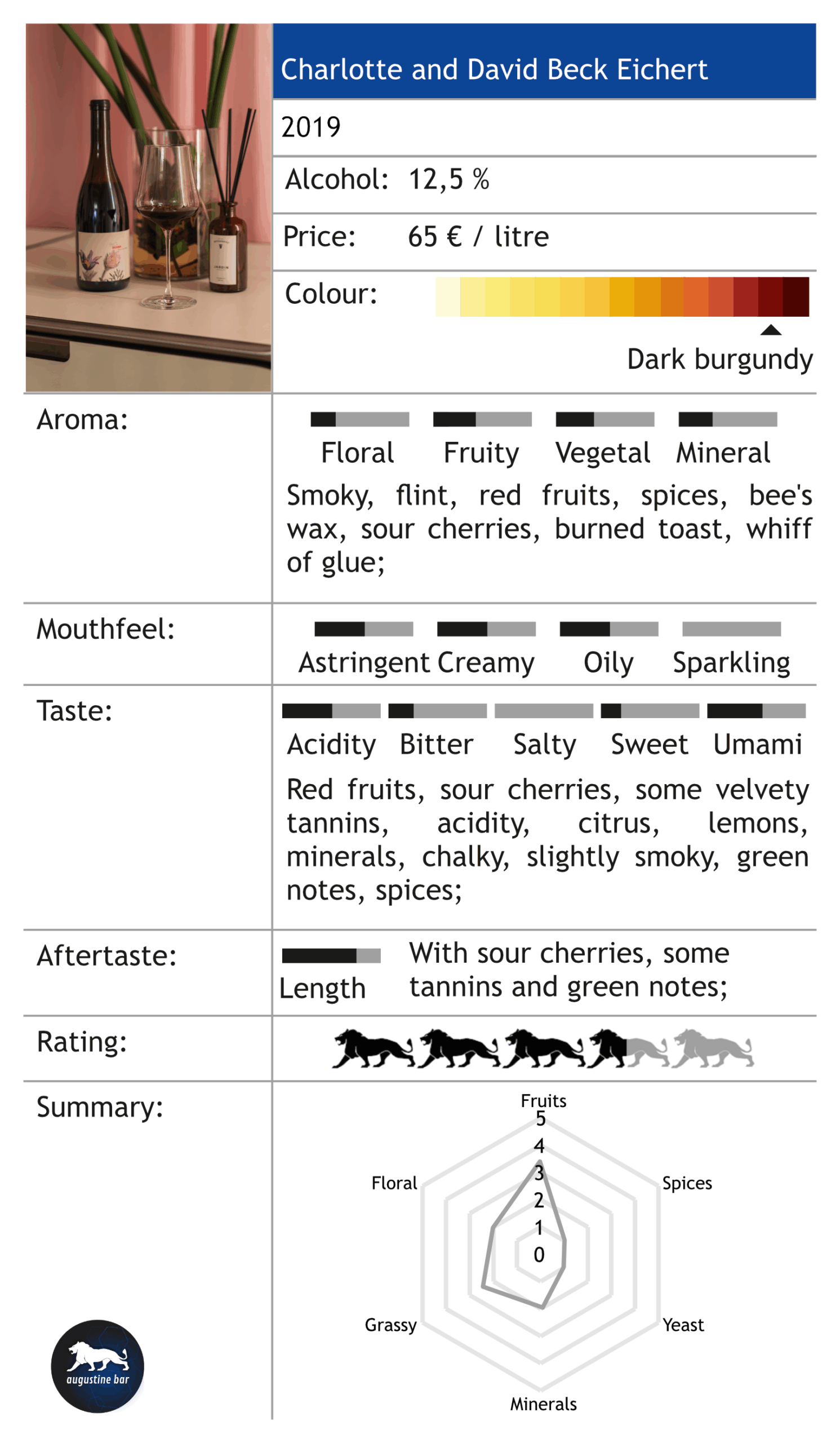
The Eichert again started with some reductive notes which lingered on quite a bit. Yet, below you could find light red fruits like sour cherries in combination with quite some minerals. At the same time, the wine had some funk reminding me of vegetal notes. All in all, the wine was quite unique with velvety tannins and tasters applauded that.
Christmann Gimmeldinger Schloessel
The Christmann Gimmeldinger Schloessel 2019 was a great contrast to the aforementioned wine. Sophie Christmann took over the production of the Pinot Noirs from her father in 2018. Apart from that, the 2019 was the first vintage from the Gimmeldinger Schloessel vinyard. The grapes are cold macerated at first with 20 % whole clusters and little Pigeage. After pressing, the wine spends over a year in French oak barrels with 20 % new oak.
Prototyp of a pinot

Similar to the Solveigs, the Gimmeldinger Schloessel delivers what you might expect from a German Pinot Noir. Yet, you also notice that the Christmann comes off as being more refined with delicate fruit notes ranging from sour cherries to ripe berries. There is just a touch of oak spices. The tannins are there, but silky and well integrated. This way the wine shares the third highest rating with the Steil.
Giegerich Schlossberg 16*26
Next we continued with another 2019 Pinot Noir. This time from the Giegerich vineyard in the Mainviereck district. The grapes grow in the famous Schlossberg vineyard in Klingenberg. After a manual harvest in small crates, natives yeasts ferment the grapes and ageing takes place for 18 months in barrique barrels.
Strawberries, cherries…

The bottles for this tasting were provided by Philipp Giegerich, who was kind enough to lend them from the vineyard’s own archive. Especially, compared to the Christmann this wine was almost totally different. The colour was brighter and the fruitiness tended towards forest strawberries. Yet, the tannins had a similar quality. For me this was one of the highlights of the tasting, at the same time you need some experience to fully appreciate this bottling.
Guillot-Broux La Myotte
Obviously, I had to include a Pinot Noir from Burgundy in the tasting. Yet, I went for a bottle from the rather underrated Maconnaise district. The Guillot-Broux La Myotte comes from a single vineyard with the oldest Pinot Noir vines of the estate from Pommard. Planting density is high with 8000 vines per hectare. After destemming and spontaneous fermentation, the wine spends 18 months in used barrique barrels. Before bottling neither filtration, nor fining is done and only minimal sulphur is added.
Darker and complex

Compared to the other 2019 vintages, the La Myotte showed the most aged notes – in a positive context. The wine was dark, had darker fruit flavours, spices, some chalk as well as a certain meaty quality. You definitely noticed the different origin compared to all the German wines. At the same time this means that you have to be open for that kind of flavour profile.
Benoit Marguet La Grande Ruelle
The tasting just had to end with some Pinot Noir champagne. In this case, we tried the Benoit Marguet La Grande Ruelle 2020. The grapes come from a 0,49 ha plot in Ambonnay. Spontaneous fermentation happens in oak barrels with a slightly higher portion of new wood. The base wine ages for nine months and after the Tirage the champagne ages for 36 months in the bottle.
Excellent champagne

The first thing I noticed about this wine was its colour. I did not expect the Blanc de Noir to have this beautiful pink hue. Moreover, the aroma showed beautiful fresh red fruit notes, red apples and typical Brioche flavours. On the palate, the acidity was perfectly balanced by the rest of the taste. You were able to find red fruits, ranging from red berries to apples with backed bread, Brioche as well as some citrus. Unsurprisingly, this was by far the highest rated wine in the tasting – everybody just loved it!
*The fact that I received a product reviewed in this article for free, did not – in any way – influence the rating of said product. I received a discount for some of the wines.



